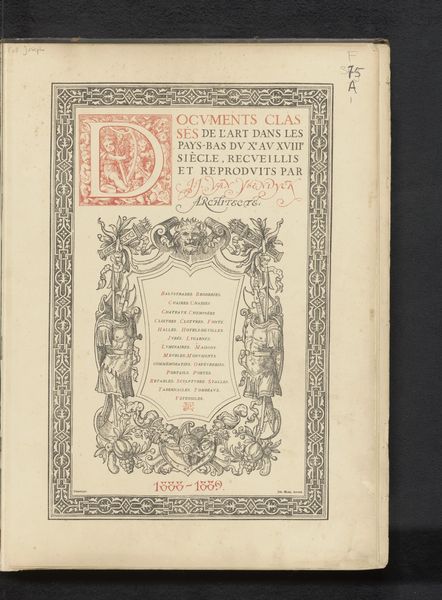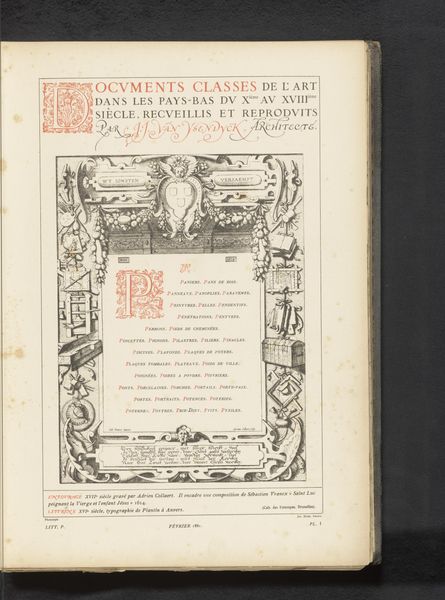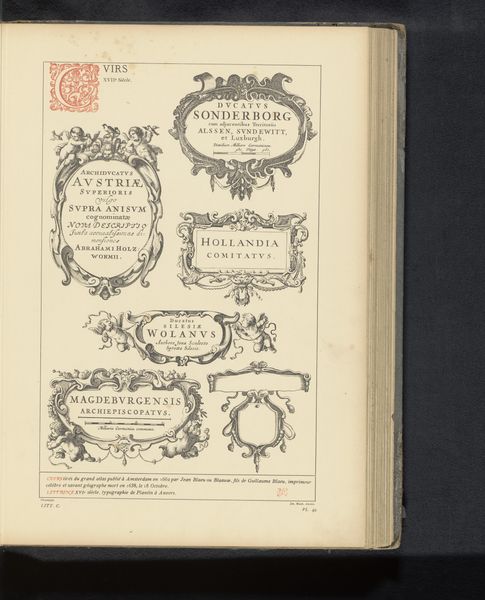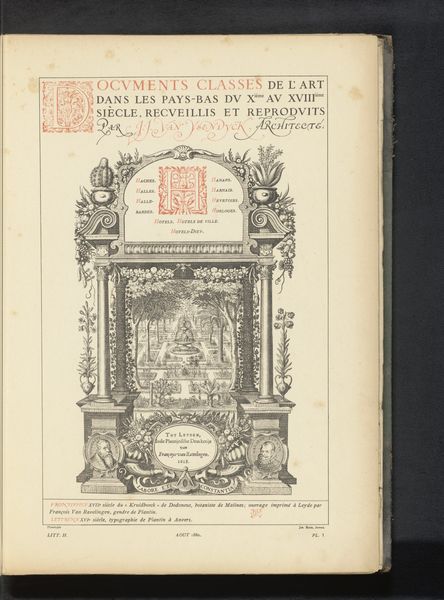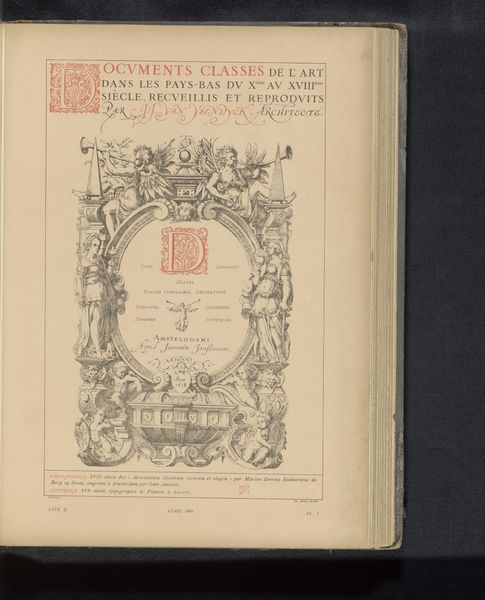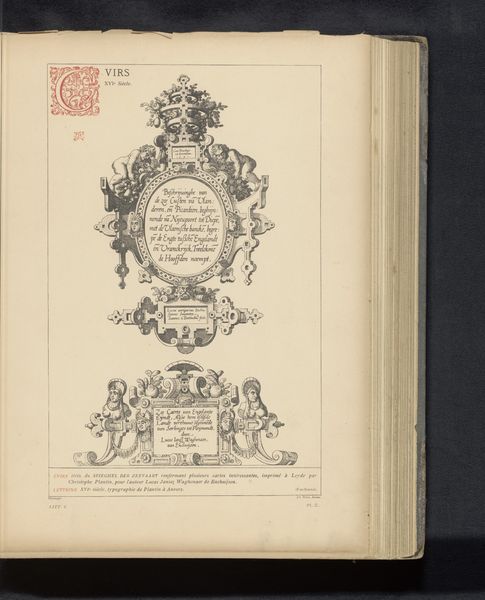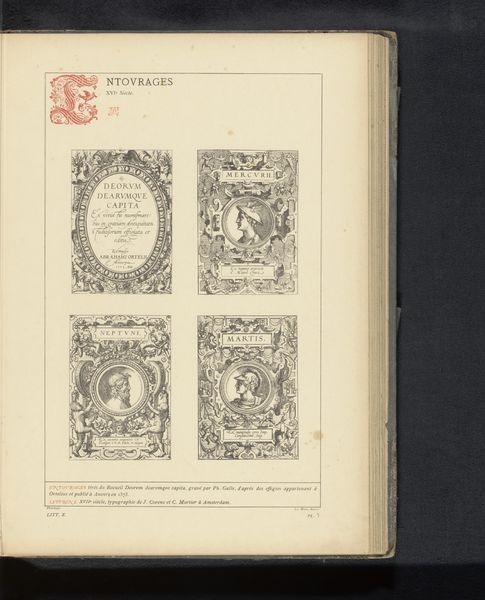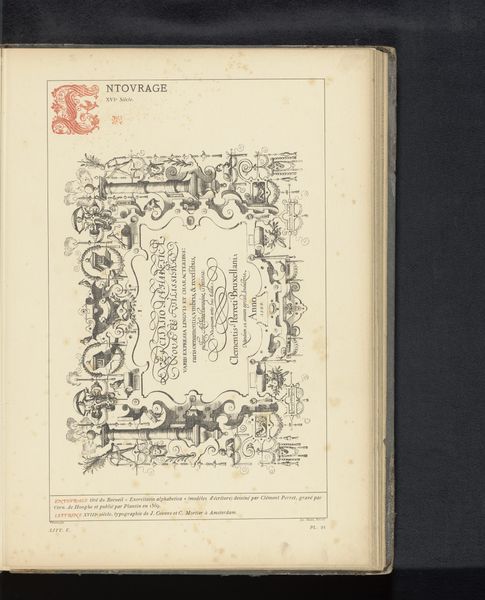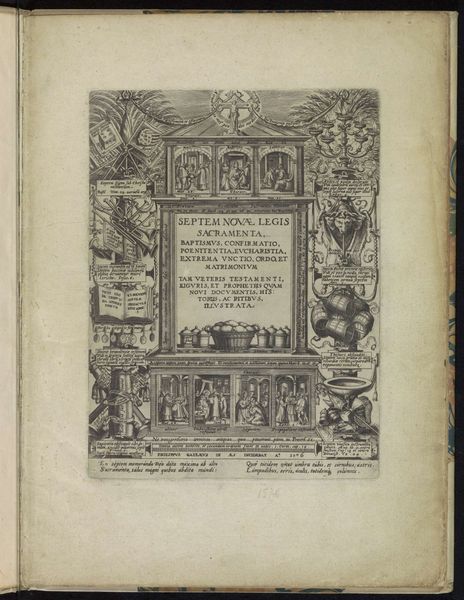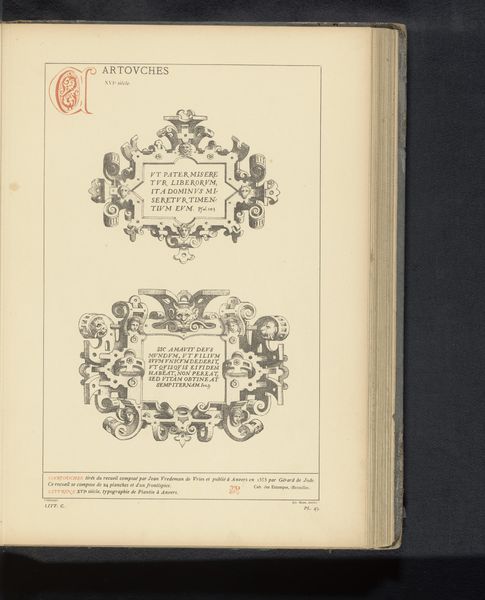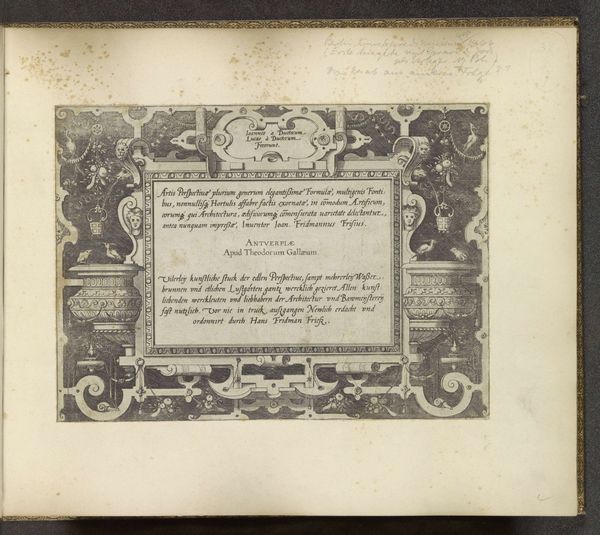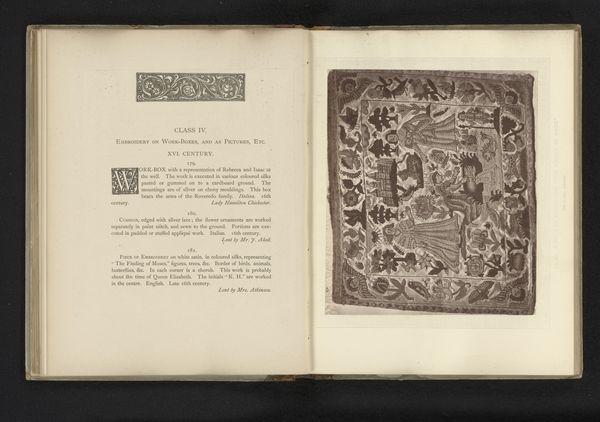
Documents classés de l'art dans les Pays-Bas du Xe au XVIIIe siècle / J.J. van Ysendijck 1886 - 1887
0:00
0:00
Dimensions: height 447 mm, width 349 mm, thickness 62 mm
Copyright: Rijks Museum: Open Domain
Curator: Looking at this graphic from the late 19th century, the "Documents classés de l'art dans les Pays-Bas du Xe au XVIIIe siècle / J.J. van Ysendijck", what are your first impressions? Editor: Chaotic, but intriguing! The interplay of typefaces, the ornate borders—it’s a real feast for the eyes. It makes me wonder about the intention behind this busy composition. Curator: Well, consider that this work, dated 1886-1887, functions as both a piece of graphic art and, in a sense, an archival project. Joseph Maes compiles this survey of visual motifs of art from the Low Countries. Editor: I see how these visual records of older art and styles become important visual tools for that moment and, also for later artists, collectors, and scholars of art from that region. How does the context and visual complexity play into this archival goal? Curator: The typography plays a large role in signaling hierarchy, dividing the cover and organizing information. The placement of the ornamental frames helps to separate and classify sections of imagery. Editor: Exactly. It is as if the artist intends to evoke something very orderly and organized. I find myself scanning the lettering for visual keys. The large initial "D" contains an interior scene reminiscent of earlier engravings and decorative arts, connecting with its survey focus on Netherlandish visual heritage. Curator: The mixed-media approach combining engraving and typography does give it an antique aura that fits with the subject matter of the history of visual culture. There’s something poignant about Maes re-presenting this earlier art through a different medium and time. He's acting as a bridge, both preserving and reinterpreting cultural memory. Editor: Indeed. As a formalist, it’s hard not to appreciate the sheer craft here and to speculate what later decorative graphic art forms that emerged in the late 19th- and early 20th centuries may have seen, learned, or borrowed from works such as this example. Curator: From an historian's perspective, considering this item as documentation within a historical era is fascinating, seeing it as it reflects emerging preservation efforts of national cultural heritage. Editor: I agree. This work reveals fascinating ways that printmakers could also be important agents of cultural reflection and reinterpretation, reminding us of our cultural debts.
Comments
No comments
Be the first to comment and join the conversation on the ultimate creative platform.
